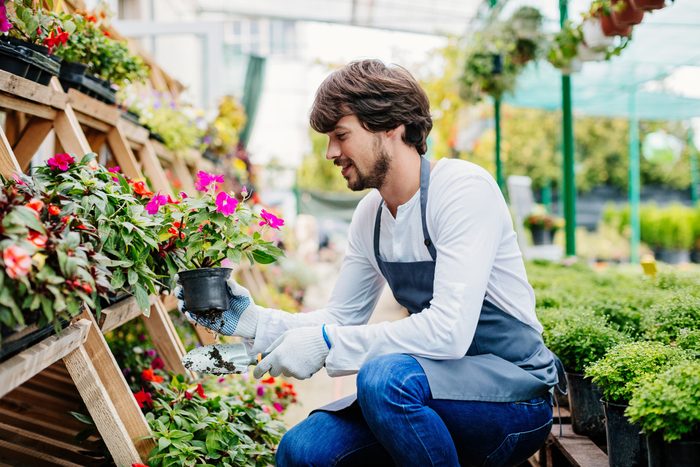Gardening 101: Building Your Ultimate Gardening Kit for Beginners
Wiki Article
The Ultimate Guide to Gardening for Beginners: Detailed Tips and Methods for Growing a Prospering Yard
Are you all set to dive right into the world of horticulture? Look no further than "The Ultimate Overview to Gardening for Beginners." This detailed guide will stroll you through whatever you need to recognize to expand a flourishing garden. From comprehending your yard room to selecting the right plants and preparing the dirt, we've got you covered. Obtain all set to unleash your eco-friendly thumb and develop a stunning, prospering garden.Comprehending Your Garden Room
Understanding your yard area is necessary for creating a flourishing garden. This will certainly aid you identify which plants will certainly prosper in each area. home gardening for beginners.Next, evaluate the dirt in your garden. Is it sandy, clay-like, or loamy? Comprehending your dirt type will certainly lead you in selecting the right plants and applying proper dirt changes. Additionally, think about the water drainage of your garden. Is it prone to waterlogging or does it drain pipes swiftly? This details will aid you make educated choices about watering and plant placement.
Moreover, take note of any microclimates within your yard. These are small locations that may differ in temperature level or wetness levels contrasted to the rest of your yard. A south-facing wall surface may preserve heat, developing a warmer microclimate. Utilize these variants to your advantage by planting heat-loving or moisture-loving plants in these areas.
Choosing the Right Plants

Do you choose low-maintenance plants or are you prepared to put in additional effort for high-yield plants? Assume concerning the quantity of time, energy, and resources you are prepared to spend in your garden.
In addition, consider the room readily available in your garden. Take measurements and plan out the format of your plants. Think about the fully grown dimension of each plant and make certain they have sufficient room to grow without congestion each other.
Ultimately, think regarding the functionality of your plant options. gardening kit for beginners. Will you have the ability to offer the needed care and maintenance for your picked plants? Take into consideration variables such as watering, feeding, pest control, and pruning
Preparing the Soil for Growing
As soon as you have actually chosen the right plants for your thriving garden, it's time to dive into the vital job of preparing the dirt for growing. Take a sample and test its pH levels, as various plants flourish in various pH arrays.
Once the soil is ready, develop furrows or holes for planting. The deepness and spacing will rely on the details demands of your chosen plants, so refer to the seed packets or plant labels for guidance. Gently put the plants in their marked places, ensuring that the roots are covered with dirt. Strongly press the soil around the base of each plant to remove any type of air pockets.
As you water, be mindful not to wash away the dirt or damage the delicate plants. With proper soil preparation, your garden will be well-equipped to support the development and success of your plants.
Watering and Fertilizing Techniques
After preparing the soil for planting, it's crucial to understand reliable watering and feeding strategies to make sure the health and wellness and development of your yard. When it pertains to watering, it is essential to strike an equilibrium. Overwatering can result in root rot and various other diseases, while underwatering can lead to stunted growth and wilting. The key is to give sufficient water to keep the dirt regularly moist however not saturated. One method to gauge if your plants require watering is by sticking your finger about an inch right into the dirt. It's time to water if it really feels completely dry. When watering, go for the base of the plants, as wetting the leaves can urge illness. When it comes to feeding, it's vital to offer your plants the nutrients they require to thrive. Organic plant foods, such as garden compost or well-rotted manure, are superb choices as they offer a sluggish release of nutrients. It's ideal to use fertilizers in early springtime or late fall, complying with the directions on the plan. Remember to water your plants after fertilizing to aid the nutrients reach the roots. By mastering these watering and fertilizing strategies, you'll be well on gardening for beginners your way to a growing garden.Maintaining a Healthy Yard
To keep a healthy garden, you must on a regular basis examine your plants for indications of conditions or parasites. By doing this, you can capture any kind of problems early on and take the required actions to prevent them from spreading and triggering damages to your whole garden.An additional approach is to encourage valuable bugs like ladybugs and lacewings, which feed on yard parasites. Growing flowers such as marigolds, daisies, and sunflowers will certainly bring in these helpful bugs to your garden.
In addition to insects, conditions can also impact your plants. Appropriate spacing in between plants and good air blood circulation can also assist protect against the spread of diseases.
Verdict
By understanding your yard room, choosing the right plants, preparing the soil, and executing correct watering and fertilizing strategies, you can develop a successful garden. With patience and dedication, you'll quickly be enjoying the appeal and bounty of your very own flourishing garden.Use these variants to your benefit by growing moisture-loving or heat-loving plants in these locations.

Report this wiki page